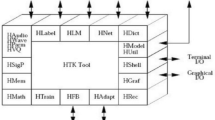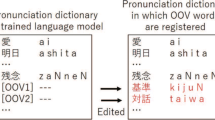Abstract
When using traditional methods to learn vocabulary, people only pay attention to memorizing the meaning of the vocabulary and ignore the combination of vocabulary and semantics. This leads to students' inability to use vocabulary in practice, and frequent misuse and abuse. The use of corpus in learning vocabulary allows students to understand the use of different word meanings while learning vocabulary, in this way, students' efficiency in English vocabulary learning is greatly improved. The development of modern science and technology has given speech recognition system more possibilities, but there are still many problems in speech recognition, for example, the accuracy of many speech recognition is not high, users need to be very careful and slow communication can make their own speech recognition; The corpus is also relatively narrow, often only save some specific recognition words, can not intelligently analyze each sentence of the user's speech. Therefore, it is necessary to expand and learn the existing corpus to add more English words, so as to improve the robustness of speech recognition. In this paper, Markov model is applied to expand the English vocabulary corpus according to the existing HTK speech recognition function to enhance its recognition performance and machine learning ability, and the speech recognition system is applied to English vocabulary learning from the corpus.





Similar content being viewed by others
References
Cutajar M, Gatt E, Grech I et al (2013) Comparative study of automatic speech recognition techniques. IET Signal Proc 7(1):25–46
Deng L, Li X (2013) Machine learning paradigms for speech recognition: an overview. IEEE Trans Audio Speech Lang Process 21(5):1060–1089
Gaikwad SK, Gawali BW, Yannawar P (2010) A review on speech recognition technique. Int J Comput Appl 10(3):16–24
Hemakumar G, Punitha P (2013) Speech recognition technology: a survey on Indian languages. Int J Inf Sci Intell Syst 2(4):1–38
Husnjak S, Perakovic D, Jovovic I (2014) Possibilities of using speech recognition systems of smart terminal devices in traffic environment. Procedia Eng 69:778–787
Karpagavalli S, Chandra E (2016) A review on automatic speech recognition architecture and approaches. Int J Signal Process 9(4):393–404
Kurzekar PK, Deshmukh RR, Waghmare VB et al (2014) A comparative study of feature extraction techniques for speech recognition system. Int J Innov Res Sci, Eng Technol 3(12):18006–18016
Ladd TD, Jelezko F, Laflamme R et al (2010) Quantum computers. Nature 464(7285):45–53
Liu Y, Sivaparthipan CB, Shankar A (2022) Human–computer interaction based visual feedback system for augmentative and alternative communication. Int J Speech Technol 25(2):305–314
Malik M, Malik MK, Mehmood K et al (2021) Automatic speech recognition: a survey. Multimed Tools Appl 80(6):9411–9457
Mosa E, Messiha NW, Zahran O et al (2011) Chaotic encryption of speech signals. Int J Speech Technol 14(4):285–296
Radha V, Vimala C (2012) A review on speech recognition challenges and approaches. Doaj. Org 2(1):1–7
Sharma FR, Wasson SG (2012) Speech recognition and synthesis tool: assistive technology for physically disabled persons. Int J Comput Sci Telecommun 3(4):86–91
Siniscalchi SM, Svendsen T, Lee CH (2014) An artificial neural network approach to automatic speech processing. Neurocomputing 140:326–338
Swamy S, Ramakrishnan KV (2013) An efficient speech recognition system. Comput Sci Eng 3(4):21
Vogel M, Kaisers W, Wassmuth R et al (2015) Analysis of documentation speed using web-based medical speech recognition technology: randomized controlled trial. J Med Internet Res 17(11):e5072
Wobbrock JO, Kientz JA (2016) Research contributions in human-computer interaction. Interactions 23(3):38–44
Funding
This study and all authors have received no funding.
Author information
Authors and Affiliations
Corresponding author
Ethics declarations
Conflict of interest
The author reports no conflicts of interest.
Ethical approval
This article does not contain any studies with human participants performed by any of the authors.
Informed consent
Not applicable.
Additional information
Publisher's Note
Springer Nature remains neutral with regard to jurisdictional claims in published maps and institutional affiliations.
Rights and permissions
Springer Nature or its licensor (e.g. a society or other partner) holds exclusive rights to this article under a publishing agreement with the author(s) or other rightsholder(s); author self-archiving of the accepted manuscript version of this article is solely governed by the terms of such publishing agreement and applicable law.
About this article
Cite this article
Junli, C. Speech recognition and English corpus vocabulary learning based on endpoint detection algorithm. Int J Syst Assur Eng Manag (2023). https://doi.org/10.1007/s13198-023-01995-0
Received:
Revised:
Accepted:
Published:
DOI: https://doi.org/10.1007/s13198-023-01995-0




